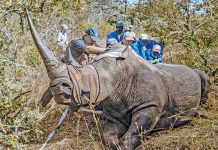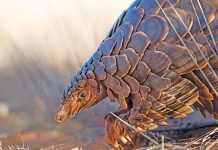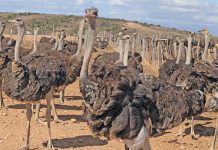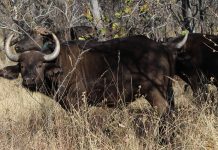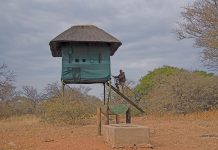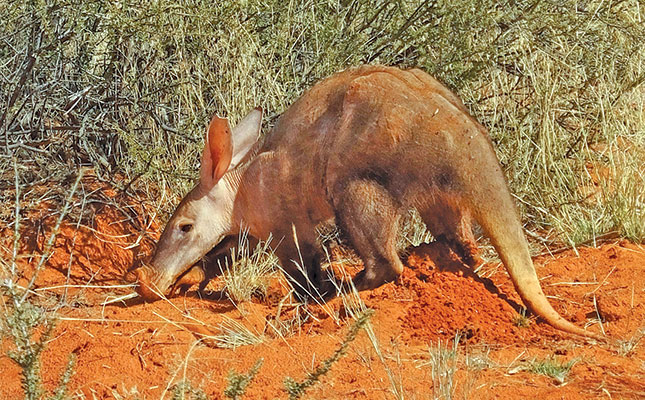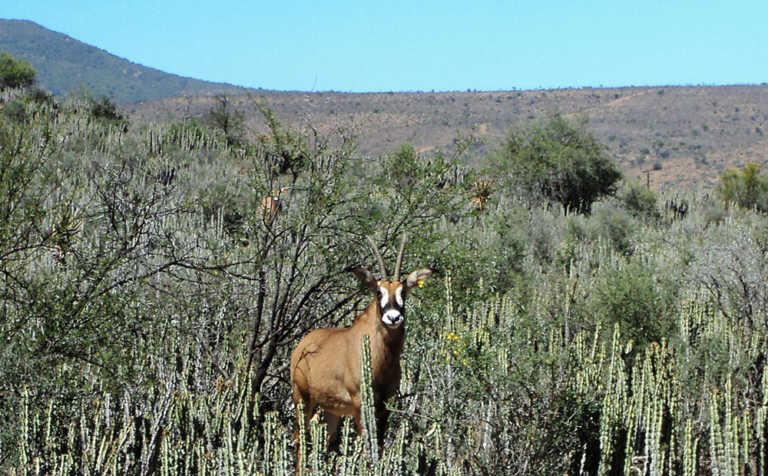
Photo: Roelof Bezuidenhout
While doomsayers view the falling prices of game, notably that of colour variants, as proof that the long-predicted bubble has burst, game ranchers who cashed in on the boom believe the industry has so many facets that further growth is guaranteed.
However, in the midst of this debate, there are farmers who are unsure about price movements in the future.
Some have already invested heavily in high-value game. Others are still considering the idea of switching from livestock, or bringing game farming into their production plans. In extensive livestock regions, the main motivation for this would be to make a livestock enterprise more sustainable under unpredictable, low-rainfall conditions.
But, while financial considerations are crucial when making such decisions, there is more to game farming than money, as any visit to a game ranch will show.
Neil Dodds of Nukamma Wildlife and Rob Hobson of Swartrivier Wildlife were among the first in the southeastern Karoo to combine game with Merino sheep and Angora goats, the traditional breeds of choice in the Jansenville area.
Both are members of the Summit Wildlife Group – which runs an annual game auction in Graaff-Reinet – as well as the Karoo Midlands Wildlife Study Group.
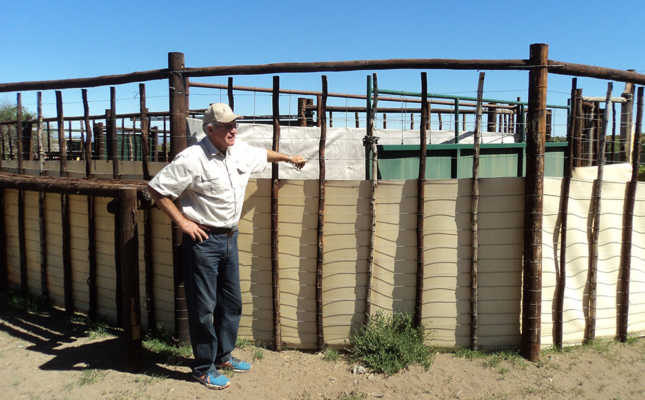
Neil invested in game about 10 years ago and keeps several species on his farm, Meerlust, but continues to run smallstock on other properties. Rob does the same on his undulating Karoo farm 30km further west.
He is in the process of reducing his smallstock component, which consists chiefly of Meatmaster sheep.
One of the attractions of game farming, according to Neil, is that a farmer does not need to keep as many animals; it is possible to earn more from a handful of top game specimens than from 1 000 sheep or goats.
In addition, simply having fewer hooves on the ground means that less labour is required and there is less pressure on the veld. This drastic reduction in livestock numbers changes a farmer’s approach to management.
Once the fencing and bomas are built, the frenzied, day-to-day work of extensive livestock farming comes to an end. Gone is the stress of watering and feeding thousands of thirsty sheep during a drought.
There is time for other activities, such as taking game drives. In addition, seeing a newborn impala lamb with its mother, or a herd of wildebeest on one’s doorstep, is simply more exciting, Neil explains.
“Once you’re in [the business], you’re inclined to get very enthusiastic and keep ploughing money back into it, perhaps more so than on a livestock farm,” he says.
“There’s always something new that comes up and so many species to choose from. A game farm propels the manager and his family into the tourist industry in a way that a smallstock farm cannot.”
As South Africa gains more recognition as a tourist destination, many ways of generating extra income open up.
“Also, caring for magnificent game animals on a day-to- day basis is an extremely rewarding activity.”
Back to the land
According to Neil, game farming is enticing younger people back to farming.
“I’m not knocking smallstock farming, which is still the backbone of the Karoo economy. In fact, game farmers could use it as a backdoor, should their game segment fail,” he says.
Although he believes it unlikely, Neil says that a game farmer could reach a point where it might be prudent to rebuild smallstock flocks. Should that be necessary, he would be better able to cope with predators and veld management than before.
“Getting into game farming forces, or financially enables, a farmer to upgrade infrastructure such as fencing and water systems to a point where reverting to smallstock would be a pleasure,” says Neil.
Starting out
Notwithstanding its advantages, game farming is a specialised and expensive venture, and it is crucial to carry out thorough research and be prepared to learn, stresses Neil. In addition, high-value animals, especially females with young, must receive special care.
“Try to start with the best genetic material you can afford. You can spot good breeding a mile away,” he says.
Neil suggests that new entrants should start with what is already on their farms, even if it is just springbok. But a small herd of nyala is also a good investment, as is disease-free buffalo.
Rob agrees, adding that current prices of roan antelope should remain stable as these animals are still scarce and not easy to breed.
However, sable antelope prices are much lower than before and it remains to be seen whether this market segment will stabilise. They could be oversupplied, partly because they are easy to manage and hence popular.
On the other hand, prices of good quality plains game are increasing.
Good reasons for optimism
Asked about the future of hunting, Neil, who is president of the East Cape Game Management Association, says that there is renewed interest in biltong hunting in South Africa and there is no reason to think that trophy hunting will disappear.
The weak rand makes a hunting trip to South Africa more affordable for foreigners.
But the game industry is also subject to other challenges, such as the recent countrywide drought, which has resulted in farmers spending most of their funds on feed, leaving them
less money to spend at game auctions. Adequate countrywide rain, however, could reverse this trend.
Email Neil Dodds at [email protected], or Rob Hobson at [email protected].

